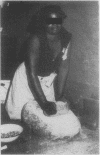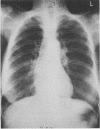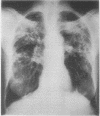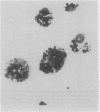Abstract
A form of pneumoconiosis in rural African women termed "Transkei silicosis" has been thought to be due to silica particles inhaled while they are hand grinding maize between rocks. Twenty five women were studied who were considered to have this condition according to the following criteria: rural domicile, radiographic and lung biopsy evidence of pneumoconiosis, no exposure to mining or industry and no evidence of active tuberculosis. They were assessed for radiological, pathological, physiological and bronchoalveolar lavage fluid features. Potential aetiological factors were assessed by determining levels of exposure to respirable quartz and non-quartz containing dusts and smoke in rural dwellings during maize grinding and cooking. Most of the women were symptomless. Radiological findings ranged from a miliary pattern to extensive fibrosis resembling progressive massive fibrosis. Histological features included simple "anthracosis" in 12, anthracosis with macules in six, and mixed dust fibrosis in seven. Cell numbers and their proportions in lavage fluid were normal. More than 60% of macrophages were heavily laden with inorganic inclusions. Respirable quartz concentrations and calculated cumulative time weighted exposures were below those recommended for industry during grinding with sandstone (100% quartz) and they were even lower during grinding with dolerite containing no quartz despite the presence of an appreciable amount of quartz in the ground maize. Total respirable dust and smoke concentrations were greater than the recommended safe levels. Three women had no exposure to maize grinding. It is concluded that the inhalation of non-quartz containing dust and smoke from biomass fuelled fires is more important in the aetiology of this condition than exposure to quartz dust. The term "hut lung" may be more appropriate.
Full text
PDF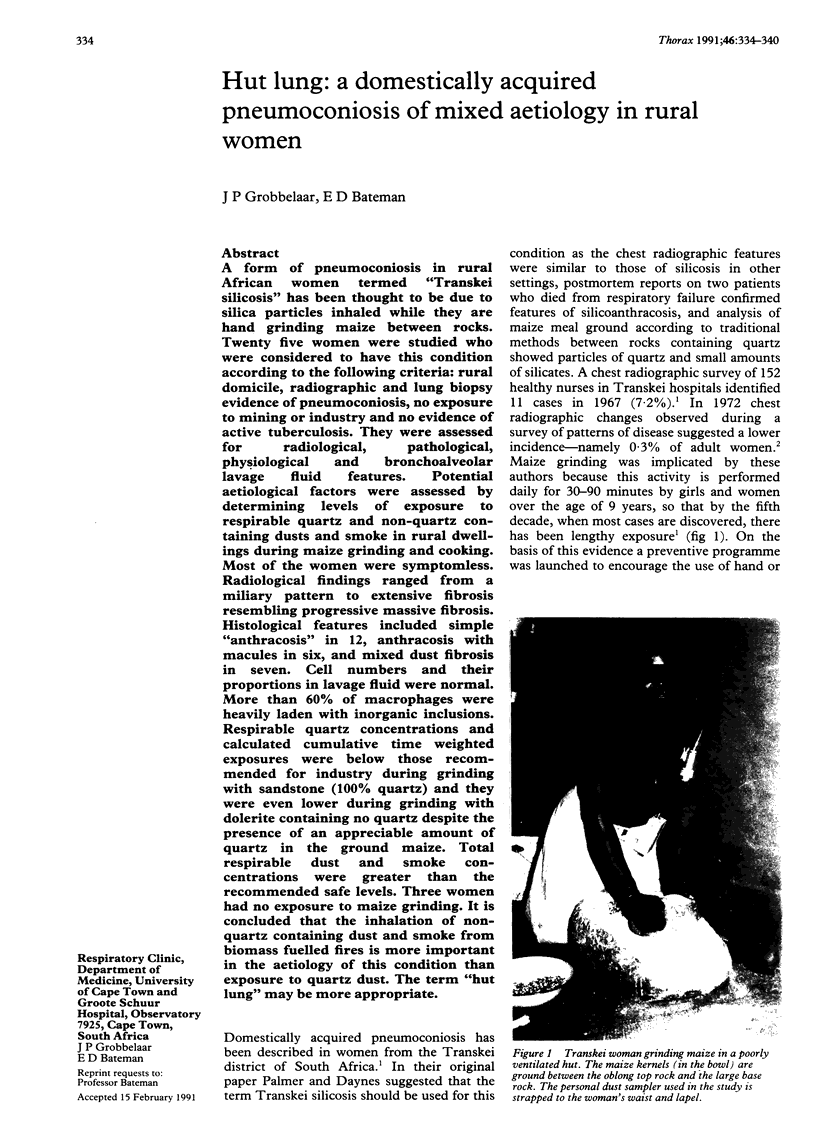
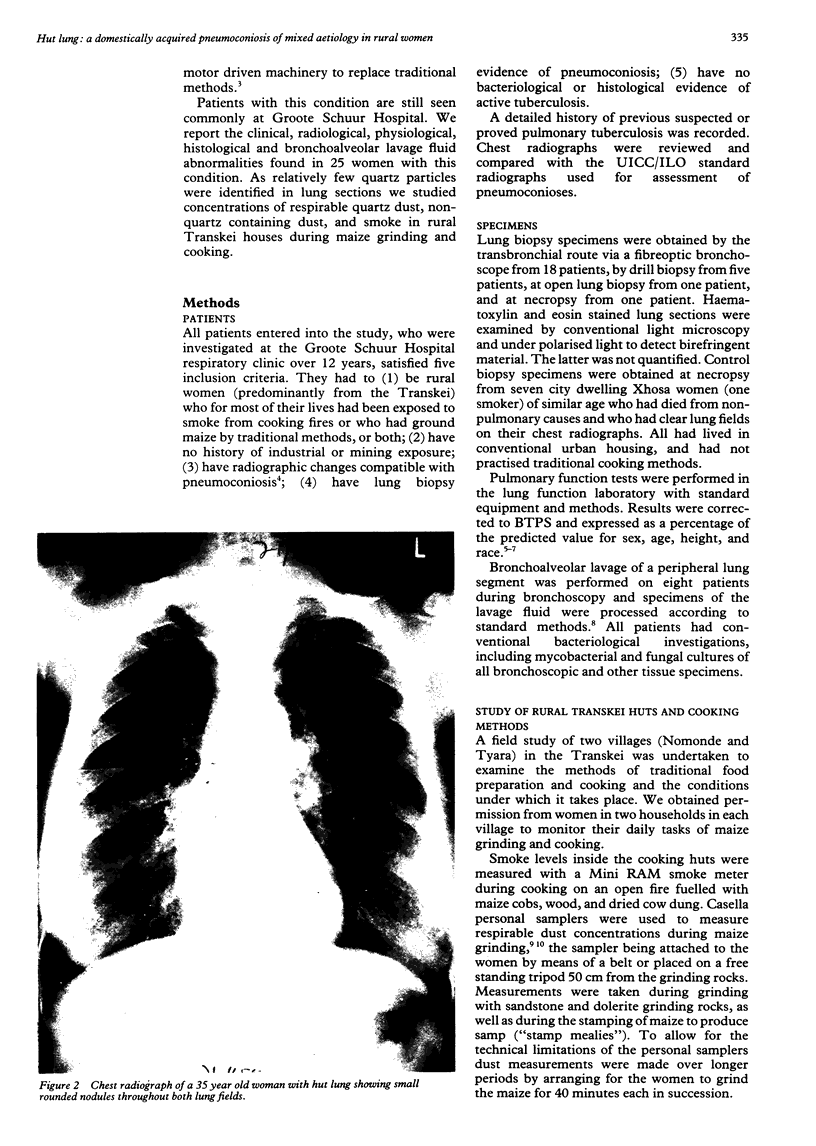
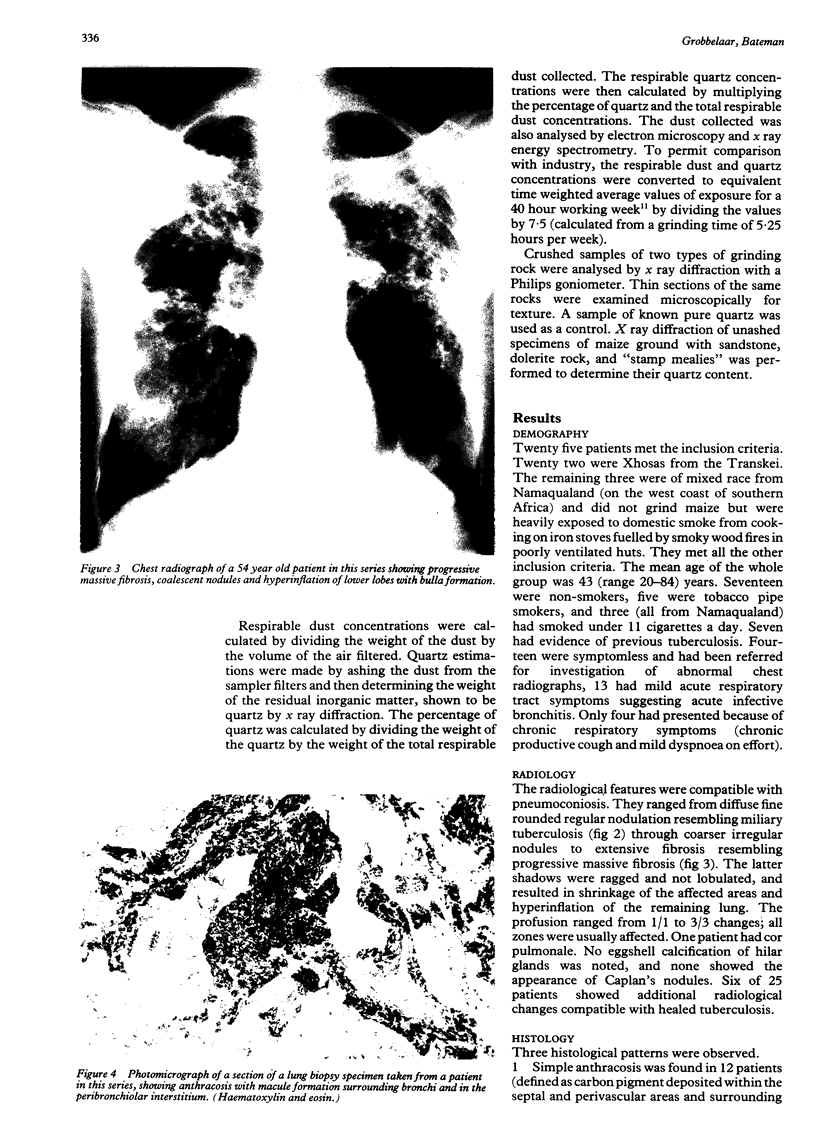
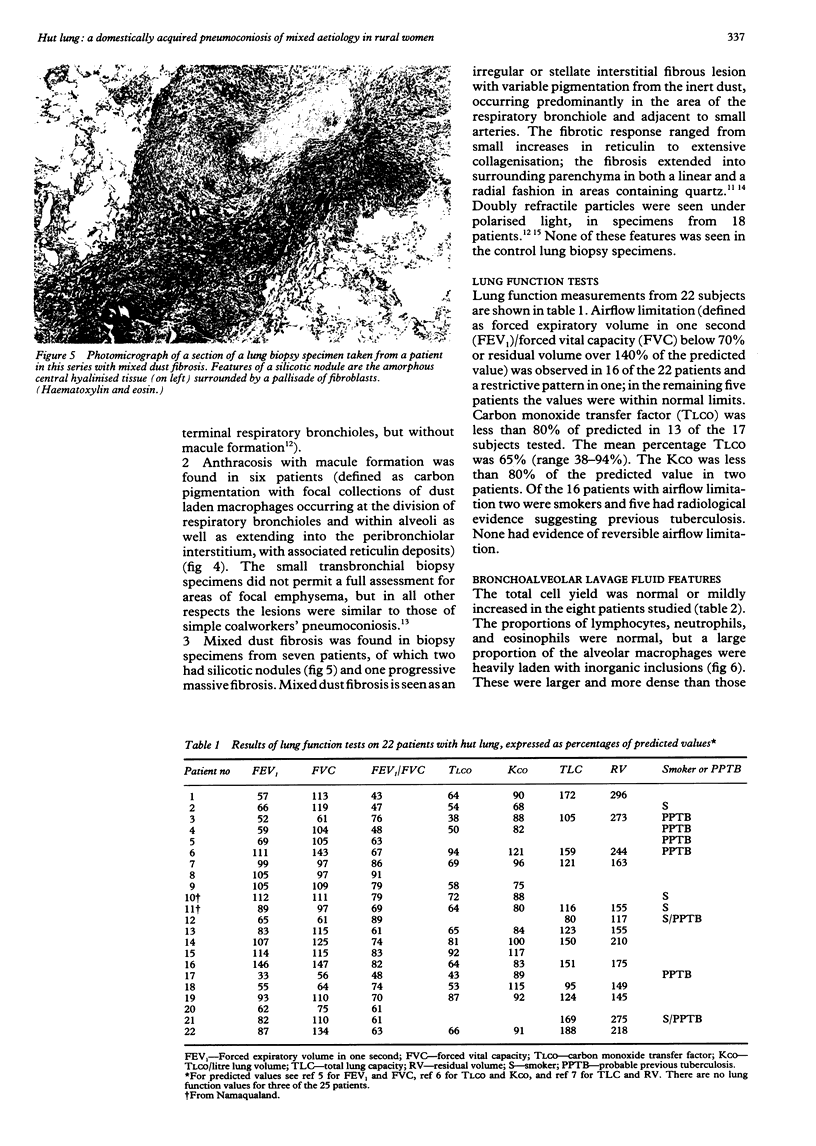
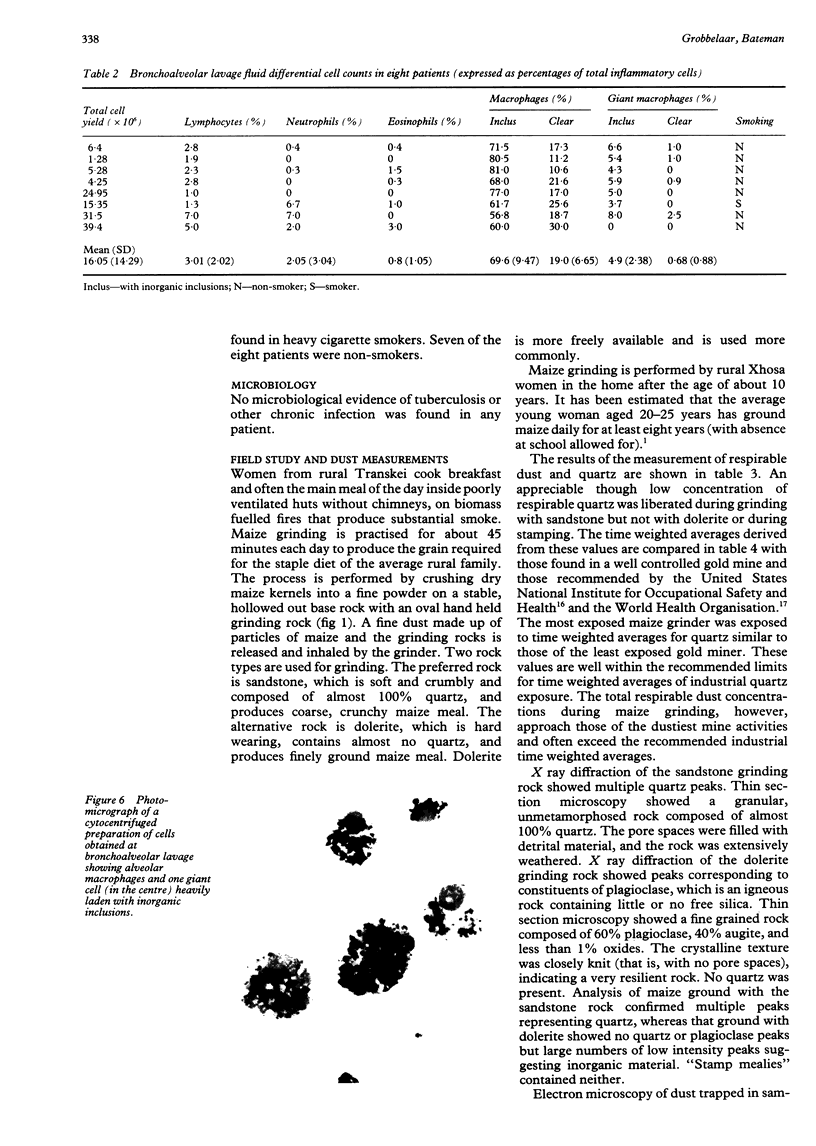
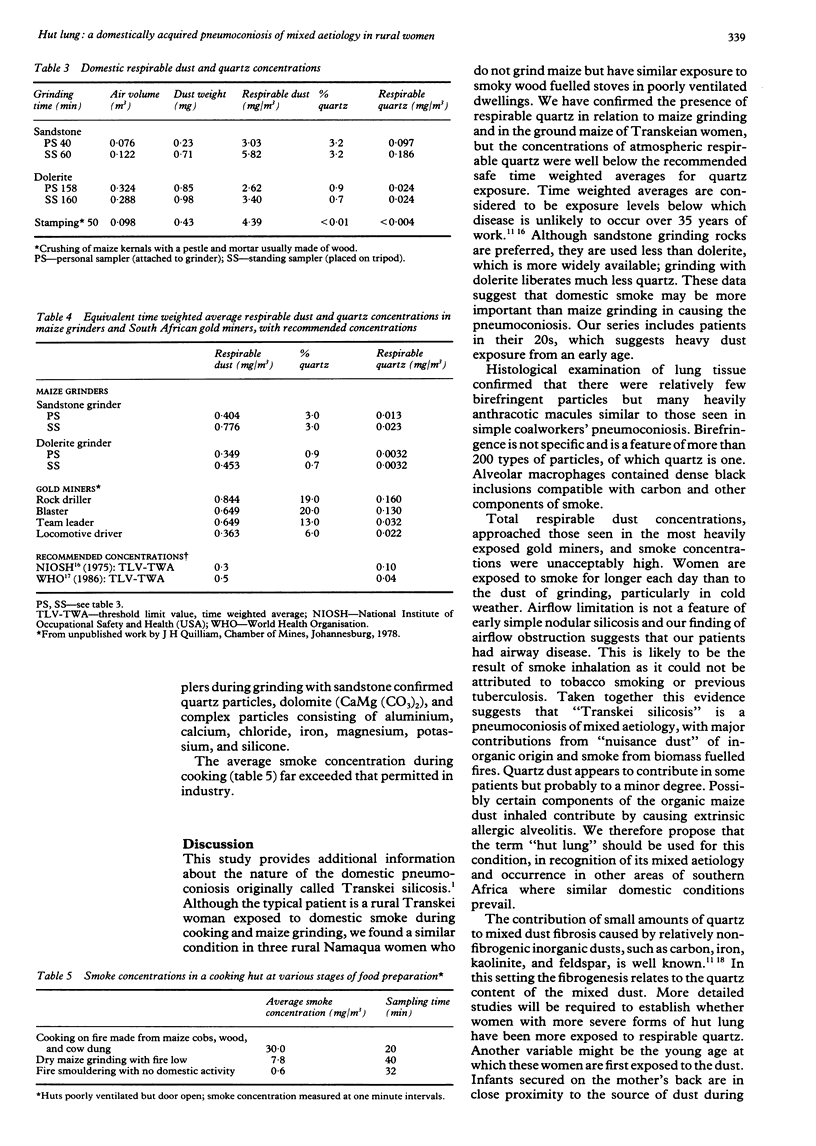
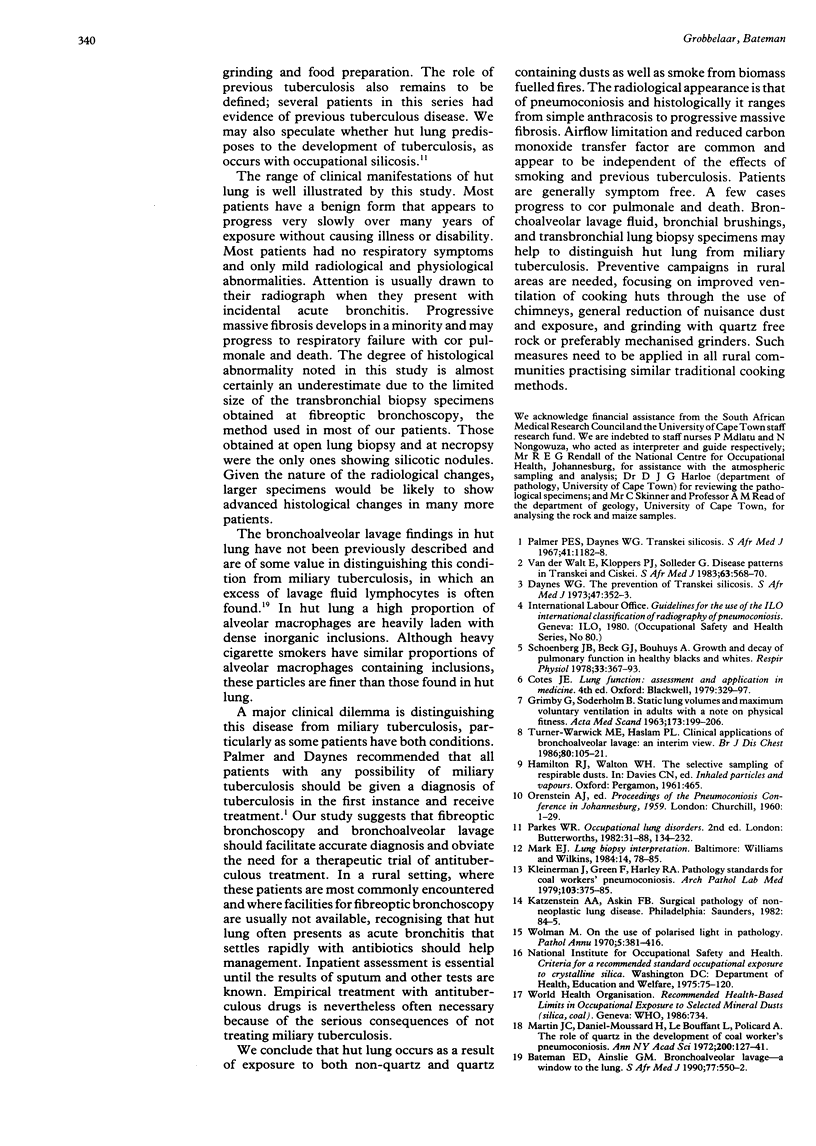
Images in this article
Selected References
These references are in PubMed. This may not be the complete list of references from this article.
- Bateman E. D., Ainslie G. M. Broncho-alveolar lavage--a window to the lung. S Afr Med J. 1990 Jun 2;77(11):550–552. [PubMed] [Google Scholar]
- Daynes W. G. The prevention of Transkei silicosis. S Afr Med J. 1973 Feb 24;47(8):352–353. [PubMed] [Google Scholar]
- Martin J. C., Daniel-Moussard H., Le Bouffant L., Policard A. The role of quartz in the development of coal workers' pneumoconiosis. Ann N Y Acad Sci. 1972 Dec 29;200:127–141. doi: 10.1111/j.1749-6632.1972.tb40182.x. [DOI] [PubMed] [Google Scholar]
- Pathology standards for coal workers' pneumoconiosis. Report of the Pneumoconiosis Committee of the College of American Pathologists to the National Institute for Occupational Safety and Health. Arch Pathol Lab Med. 1979 Jul 6;103(8):375–432. [PubMed] [Google Scholar]
- Schoenberg J. B., Beck G. J., Bouhuys A. Growth and decay of pulmonary function in healthy blacks and whites. Respir Physiol. 1978 Jun;33(3):367–393. doi: 10.1016/0034-5687(78)90063-4. [DOI] [PubMed] [Google Scholar]
- The hazards of skin- and scuba-diving. S Afr Med J. 1967 Jan 7;41(1):1–2. [PubMed] [Google Scholar]
- Turner-Warwick M. E., Haslam P. L. Clinical applications of bronchoalveolar lavage: an interim view. Br J Dis Chest. 1986 Apr;80(2):105–121. doi: 10.1016/0007-0971(86)90031-8. [DOI] [PubMed] [Google Scholar]
- Wolman M. On the use of polarized light in pathology. Pathol Annu. 1970;5:381–416. [PubMed] [Google Scholar]
- van der Walt E., Kloppers P. J., Solleder G. Disease patterns in Transkei and Ciskei. S Afr Med J. 1983 Apr 9;63(15):568–570. [PubMed] [Google Scholar]



